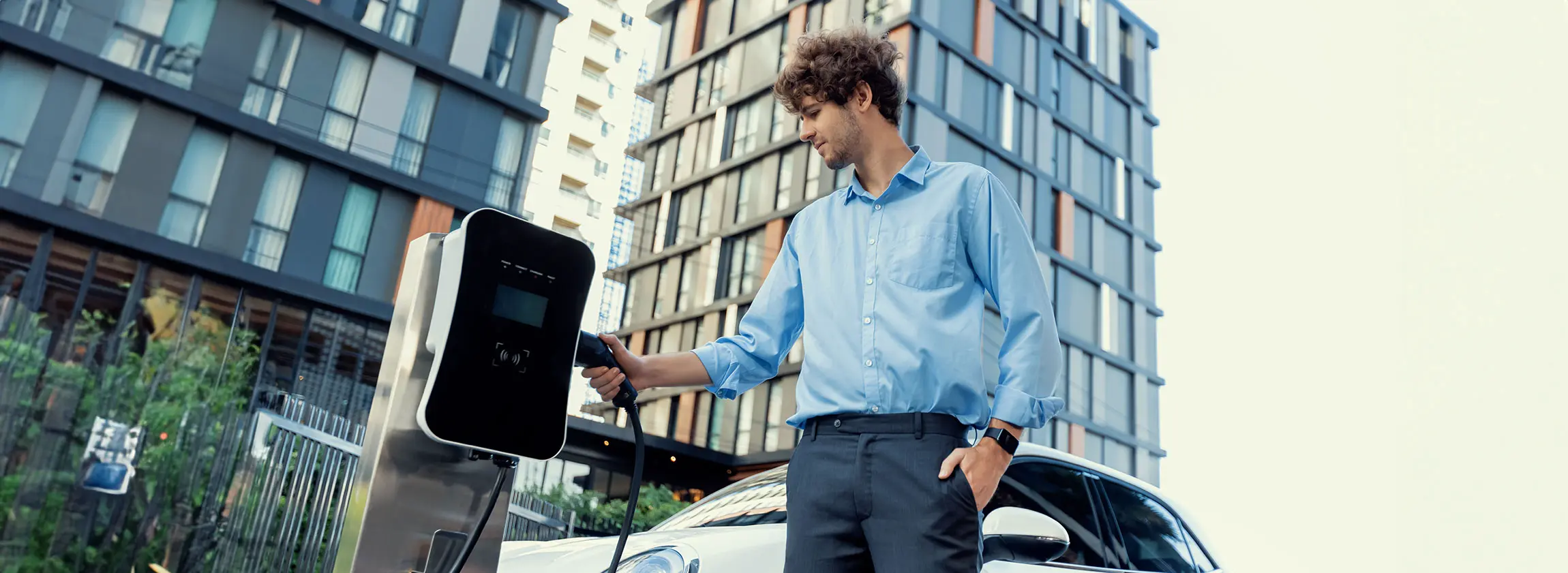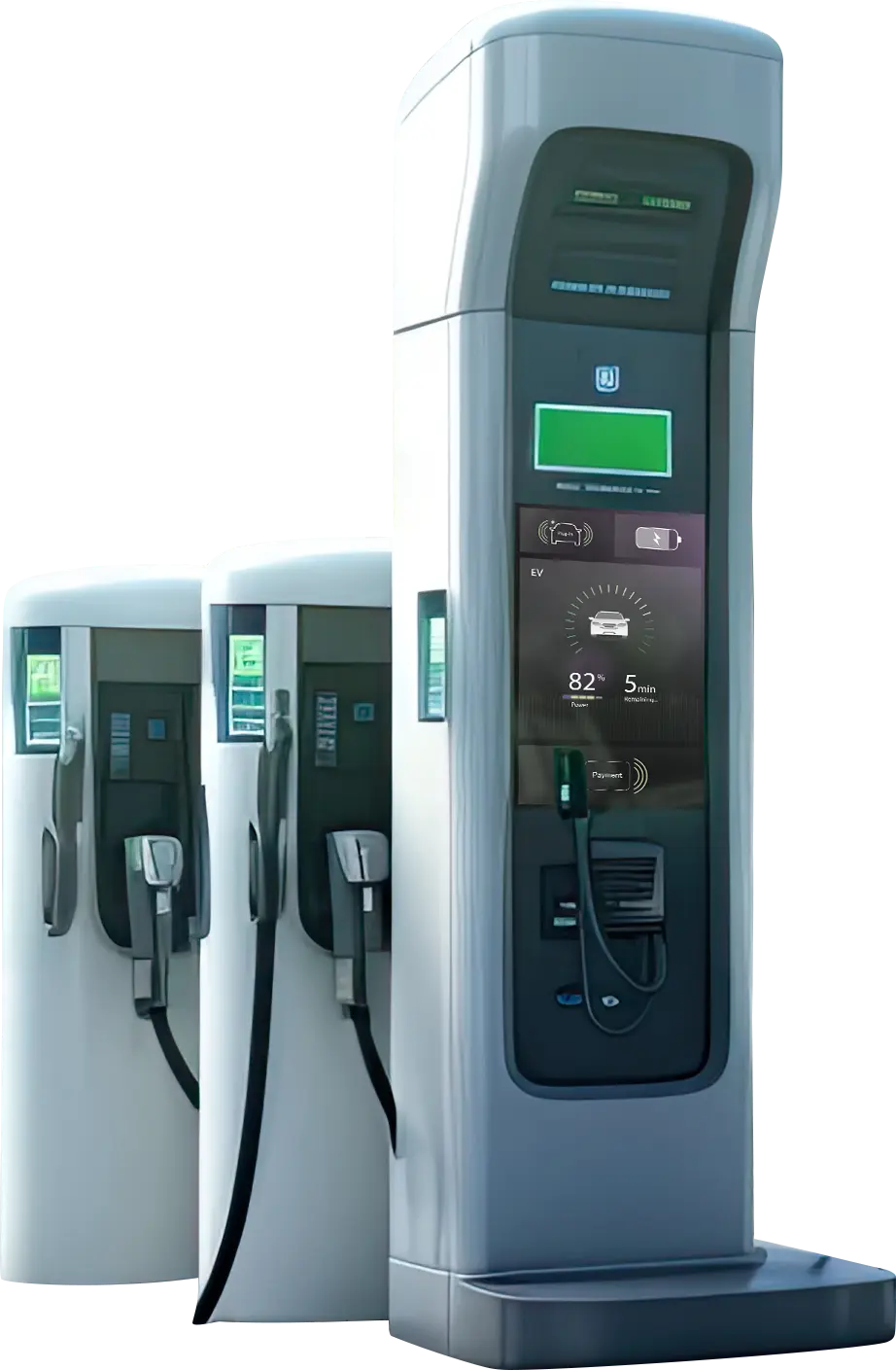
How to Pick the Best Type of EV Charger for Your Rental Property
Electric cars will make up 20% of new vehicle registrations by 2050. As electric vehicles (EVs) become more popular, the demand for accessible charging stations rises. For landlords and business owners, installing EV chargers can significantly boost the appeal and value of your property.
Home values can increase by 5.9% when they’re within a third of a mile from an EV charging station.
Tenants increasingly prefer properties with convenient EV charging options, and those living in multifamily dwellings show a strong preference for near-home charging. Offering EV charging stations can attract and retain tenants, leading to higher occupancy rates and rental income.
This solves a huge issue for landlords: rising operating costs due to inflation. In New York, higher property taxes, increases in insurance premiums, and more expensive maintenance costs come out of the owner’s pocket. Landlords need new ways to increase profits. Installing EV chargers offsets these costs by offering a high-demand amenity that can justify higher rent prices.
If you’re seeing your profits lower year after year, don’t wait–install an EV charger and create an additional revenue stream. Before you install, you need to know the pros and cons between the three charger levels to make the best long-term investment for your business.
Choosing the right EV charger for your rental property begins with understanding the three charging levels available to consumers.
Level 1 chargers are the most basic EV charger, using a standard 120V household outlet. These chargers are the slowest option, requiring 12 to 20 hours to fully charge an electric vehicle’s battery, depending on the battery size and the vehicle model. Level 1 chargers are easy to set up and are often included as the default charging method for new EV owners. They require no special wiring to install and utilize the existing electrical infrastructure.
Typically, level 1 chargers are found in single-family homes where EV usage is low, such as when there’s only one EV in the household or when the vehicle has plenty of downtime between uses. These chargers can be a viable option for homeowners who drive short distances daily and can leave their cars plugged in overnight. However, they’re not recommended for rental properties due to their slow charging speed.
Approximately 20% of households use level 1 chargers, while 70% use level 2 and 6% use both.
A significant step up from Level 1, Level 2 chargers use a 240V outlet to deliver a faster charging experience. These chargers can recharge an electric vehicle in 2 to 10 hours, depending on the vehicle’s battery capacity and charging capabilities. This faster charging time makes Level 2 chargers a practical solution for properties where EVs are used more frequently, such as in multi-family units or commercial settings. Unlike Level 1 chargers, Level 2 chargers usually require dedicated electrical circuits and professional EV installation from a company like ETCS.
S&P Global Mobility estimates a need for 1.2 million level 2 chargers nationwide by 2027
Level 2 chargers are ideal for multi-family residential properties, commercial properties, and rental locations with a high frequency of EV usage. They are particularly well-suited for environments where tenants or guests need to recharge their vehicles within a few hours rather than overnight. For landlords and property managers looking to attract and retain tenants who drive electric cars, offering Level 2 charging stations can be a strong selling point–especially with state and federal rebates for EV charging.
For example, the New Jersey EV Tourism Incentive Program includes up to $5,000 for an eligible Level-Two charger, up to the cost of the charger, and up to $50,000 for a DCFC.
Electric vehicle drivers who live in multifamily housing are 350% more likely to consider near-to-home fast charging as important.
Level 3 chargers, commonly known as DC Fast Chargers, are the cutting edge of EV charging technology. Level 1 and Level 2 chargers use alternating current (AC), which results in slower charging speeds. Level 3 chargers convert AC power from the grid to direct current (DC) within the charging station to deliver rapid charging speeds. These chargers can replenish an EV battery in 15-25 minutes, depending on the vehicle. Level 3 chargers are the fastest option, offering a quick and convenient solution to get back on the road as soon as possible.
Level 3 chargers are best suited for commercial properties, high-traffic rental locations, or areas with heavy EV usage, such as shopping centers, hotels, or rest stops along major highways. They are valuable for drivers on the go who need a fast charge, making them an attractive amenity for businesses looking to draw in customers or for landlords catering to tenants with demanding schedules. Level 3 chargers are not usually installed in single-family homes due to the need to improve the existing electrical infrastructure.
Level 1 chargers are best for single-family homes, not for multi-unit properties. Based on the information provided, you can eliminate that option. However, it can be challenging to assess if a level 2 or level 3 charger is right for your business or property. Consider the following factors when making your decision:
If you need help deciding, call one of the expert installers at ETCS. They can visit your project site and help assess the best options for your property.
Another important consideration is whether to install a single-port or dual-port charger.
Single-port chargers service one vehicle at a time, making them a good option for properties with limited parking spaces or lower EV demand. By focusing on a single car, they provide a reliable charging solution without extensive infrastructure or complex installation.
Additional benefits to single port chargers include:
Dual-port chargers charge two vehicles simultaneously. They’re great for properties with multiple EV-driving tenants or lots of traffic. These chargers are popular where the demand for EV charging is high, such as in multi-family residential complexes, commercial properties, or busy rental locations. By accommodating two vehicles at once, dual-port chargers maximize the efficiency of available charging infrastructure.
Depending on the type of charger you install, a dual port charger may be slower than a single port. For example, AC Level 2 chargers split the power between the two ports in use, reducing charge speed per vehicle. A professional installer like ETCS can talk you through the different options with dual port chargers to choose the best charging speed for your property.
Additional benefits of dual port chargers include:
27% of renters are interested in EV charging stations and would pay $28.12 more per month for them.
Before installing EV chargers, assess your property’s electrical system. Level 2 and Level 3 chargers may require upgrades to your electrical infrastructure, which can be costly. Working with a professional installer ensures safety, efficiency, and compliance with local regulations.
Choosing a reliable installer like ETCS can simplify the process. With experience in rental property installations, we can help you select the right charger, manage the installation, and ensure the system meets all necessary standards.
Once your EV charger is installed, maximize its value by effectively marketing it as an amenity. Highlight the availability of EV charging in your rental listings and promote it through social media, ad campaigns, and newsletters. Updating physical signage to reflect EV-charging availability can also attract eco-conscious tenants.
Establish clear rules for charger usage to prevent congestion and manage costs. For example, offering charging as a paid service can prevent tenants from monopolizing the chargers and help offset utility costs. Level 2 chargers, which take longer to charge, can become congested. Tenants may leave their car in a spot past the time needed to charge, making other tenants unable to use it. Write out EV charging rules in the rental agreement, such as how long they can charge their car at one time, to prevent issues.
To reduce installation costs, explore government funding programs. New Jersey offers the Multi-Unit Dwelling (MUD) EV Charger Incentive. The program gives incentives to support the purchase and installation of eligible level 2 EV charging equipment. Awards include $4,000 toward the purchase of a dual-port, networked level 2 EV charging station and $6,000 toward the purchase of a level 2 EV charging station for a MUD located in an Overburdened Municipality or a 100% deed restricted low and/or moderate-income development.
Additionally, New York State offers the alternative fuels and electric vehicle recharging property tax credit. The credit for each installation of property is equal to the lesser of $5,000 or 50% of the cost of property less any cost paid from the proceeds of grants that:
This can be filed with Form CT-637 for corporations and Form IT-253 for others.
Professional EV installers like ETCS can help find available incentives and assist with applications.
Investing in the correct EV charger can enhance your property’s value, attract quality tenants, and increase rental income. As EV adoption rises, offering on-site charging sets your property apart from the competition.
The EV experts at ETCS can guide you through the process, from selecting the best charger to ensuring a smooth installation, making it easy to meet the growing demand for EV charging. We offer seamless charger installation and management services, from single stations to multi-site public and fleet charging development projects.
Let us help you choose the optimal EV charger for your property, and contact us for a quote today.
How Multi-Family Properties Benefit From EV Chargers
Popularity of Electric Vehicles
Additional Information on EV Chargers
Government Funding Options

This site is protected by reCAPTCHA and the Google Privacy Policy and Terms of Service apply.